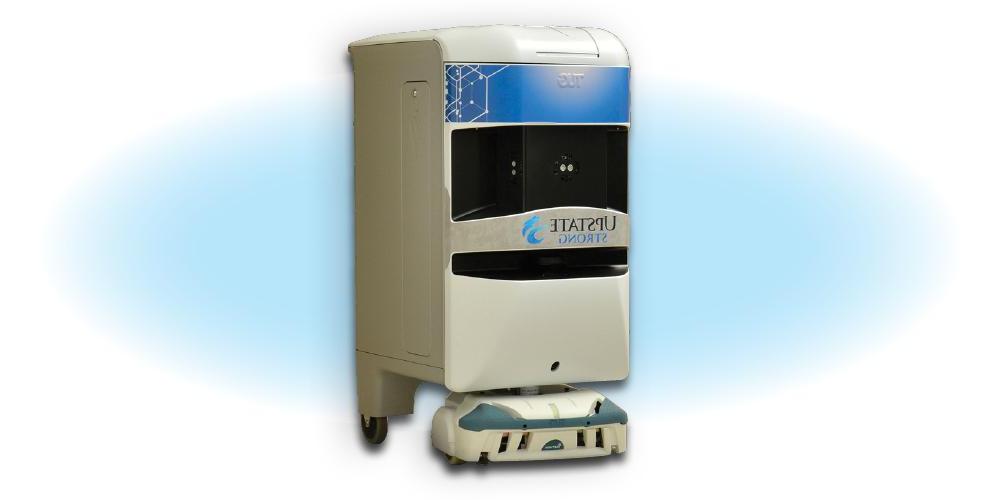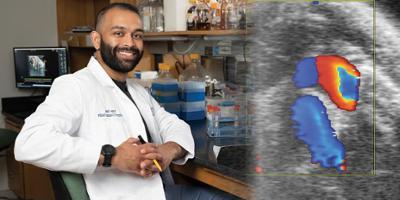In case you missed it: Robots and a COVID note
Transport robots extend the reach of hospital staff
BY JEANNE ALBANESE
A small fleet of robots ferries everything from medicine to meals around Upstate University Hospital, relying on infrared-light whiskers and a laser that scans for objects for navigation.
Supply-chain challenges and staff shortages during the COVID pandemic prompted administrators to consider investing in a fleet of 14 TUG robots manufactured by Aethon, which specializes in material delivery in hospitals, manufacturing and hotels.
Hospitals across the country are turning to robots to help with staff and nursing shortages, and the medical robot market is projected to grow into a $43 billion industry in the next five years. Currently, 37 Veterans Affairs hospitals use the same Aethon TUGs, as does Stanford Hospital and the University of California San Francisco Medical Center.
On average, TUGs travel 370 miles a week around hospitals, delivering thousands of pharmacy orders, linens and meals, among other things.
Beginning with the transport of critical drugs from the pharmacy within the hospital to the cancer center, Upstate plans to also use the robots to transport medical supplies, meals and, potentially, clinical equipment and linen. Some TUGs can carry items weighing up to 1,000 pounds.
“The possibilities are only bound by what can be safely transported.” says Steve Roberts, director of IMT-autonomous machines at Upstate. “Even now, we are thinking about how best to integrate these robots with drones. As our nationally recognized drone program continues to evolve, this handoff will become essential to supporting the transport needs of our remote sites.”
Other types of robots have long been used at Upstate to assist surgeons in performing minimally invasive surgeries, including brain surgery. The addition of TUGs frees up critical time for staff to focus on patient care.
The TUG robot stands about 4 feet high and 2 feet wide and looks like nothing more than a giant storage cart. It’s the technology behind it that makes it impressive.
The robot uses lidar (a light-based sensing method), sonar and infrared sensors to navigate. It can get on and off an elevator. When it arrives at its destination, it can let itself in. Each of its seven drawers can only be unlocked at the destination it was programmed for and by the person the delivery is for.
Getting the robots up and running required updates to hospital infrastructure, such as upgrades to elevators and doors. These changes allow the robots to navigate autonomously to a large number of destinations.
As the technology continues to advance, Upstate CEO Robert Corona, DO, says the possibilities for automated help are endless.
“With the current staffing shortage that is likely to last for several years, robots will allow our staff to work at the top of their skill set as robots take over some of the more routine tasks,” he says.
Some COVID numbers you haven’t likely seen before
Myron Martin is described as compassionate in his work for Upstate’s environmental services department, with friendly words for the patients he encounters.
 Myron Martin cleaned rooms of COVID patients thousands of times during the pandemic.
Myron Martin cleaned rooms of COVID patients thousands of times during the pandemic.He worked the COVID-19 unit of Upstate University Hospital from the beginning of the pandemic in March 2020. Co-workers nominated him for a Chancellor’s Award for Excellence.
In the first 44 weeks of the pandemic, Martin cleaned 3,657 COVID-positive patient rooms and handled 230 patient discharges. That meant handling a minimum of 3,887 bags of linen and more than 11,000 bags of trash between patient rooms and common areas.
Martin, who has worked at Upstate for six years, has long been known for his commitment and dedication. While hospitals were extra busy during the pandemic, he was willing to work overtime when needed – and it was needed 34 of the first 44 weekends of the pandemic.
This article appears in the spring 2023 issue of Upstate Health magazine.





